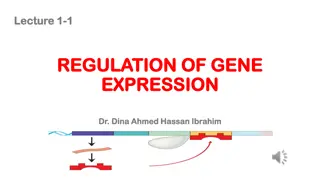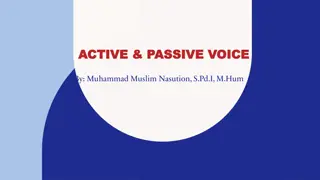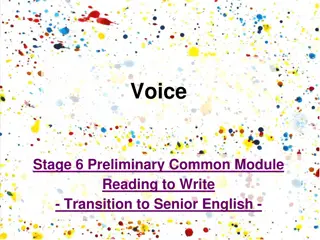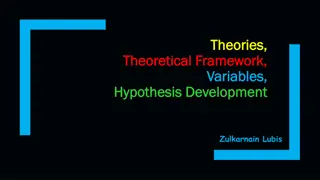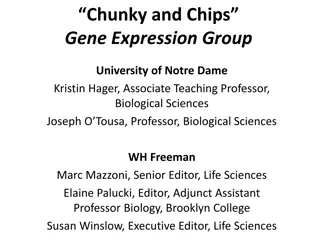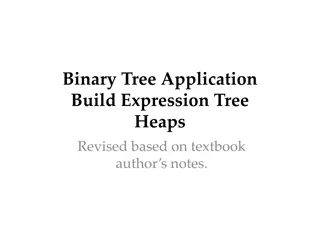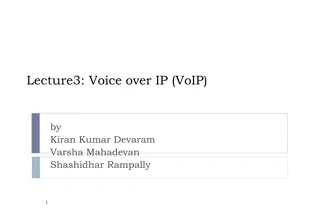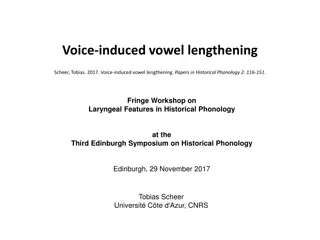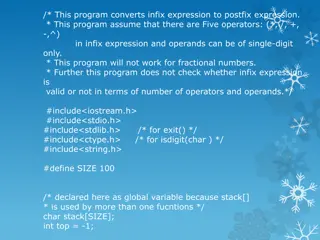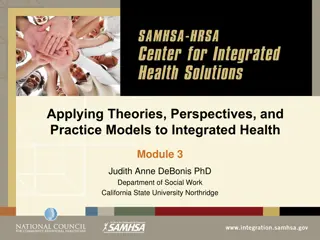Exploring Theories and Concepts of Voice and Self-Expression
Delve into the realm of voice, self-expression, and consciousness through various theories and perspectives by thinkers such as Derrida and Barthes. The concept of voice is examined in relation to presence, uniqueness, power, and language, highlighting its subjective and spiritual dimensions. Explore the philosophical, emotional, and musical aspects of voice, from presence and difference to the grain of the voice, in a journey that traverses philosophy, music, and media.
Download Presentation

Please find below an Image/Link to download the presentation.
The content on the website is provided AS IS for your information and personal use only. It may not be sold, licensed, or shared on other websites without obtaining consent from the author. Download presentation by click this link. If you encounter any issues during the download, it is possible that the publisher has removed the file from their server.
E N D
Presentation Transcript
I. Sound Theories 3. Voices
Voice is: Self-expression
Voice is: Self-expression Subjective
Voice is: Self-expression Subjective Spirit
Voice is: Self-expression Subjective Spirit Consciousness
Voice is: Self-expression Subjective Spirit Consciousness Language
Voice is: Self-expression Subjective Spirit Consciousness Language Speech
Voice is: Self-expression Subjective Spirit Consciousness Language Speech Power
Voice is: Self-expression Subjective Spirit Consciousness Language Speech Power Presence
Voice is: Self-expression Subjective Spirit Consciousness Language Speech Power Presence Unique
Voice is: Self-expression Subjective Spirit Consciousness Language Speech Power Presence Unique Plural
2 Theories of The Voice: 1. Presence / difference (Derrida) 2. The grain of the voice (Barthes)
Voice in: Music, singing (Weheliye) Philosophy (Cavarero, also Derrida) Media and emotion (Smith) Language (Dolar)
1. Voice: Presence / Difference (Jacques Derrida) Derrida is thinking about voice in relationship to Phenomenology (Husserl, also Ihde) Auto-affection: the operation of hearing oneself speak is unique: universal and internal (p. 497)
The essence of the voice: is the sole case to escape the distinction between what is worldly and what is transcendental; by the same token, it makes that distinction possible. (p. 498)
Voice as consciousness: To speak to someone is doubtless to hear oneself speak, to be heard by oneself; but, at the same time, if one is heard by another, to speaks is to make him repeat immediately in himself the hearing-oneself-speak in the very form in which I effectuated it. This immediate repetition is a reproduction of pure auto-affection without the help of anything external. (p. 498)
Voice as consciousness: To speak to someone is doubtless to hear oneself speak, to be heard by oneself; but, at the same time, if one is heard by another, to speaks is to make him repeat immediately in himself the hearing-oneself-speak in the very form in which I effectuated it. This immediate repetition is a reproduction of pure auto-affection without the help of anything external. (p. 498)
Voice as consciousness: To speak to someone is doubtless to hear oneself speak, to be heard by oneself; but, at the same time, if one is heard by another, to speaks is to make him repeat immediately in himself the hearing-oneself-speak in the very form in which I effectuated it. This immediate repetition is a reproduction of pure auto-affection without the help of anything external. (p. 498)
Voice as consciousness: To speak to someone is doubtless to hear oneself speak, to be heard by oneself; but, at the same time, if one is heard by another, to speaks is to make him repeat immediately in himself the hearing-oneself-speak in the very form in which I effectuated it. This immediate repetition is a reproduction of pure auto-affection without the help of anything external. (p. 498)
This auto-affection is no doubt the possibility for what is called subjectivity or the for-itself, but, without it, no world as suchwould appear. (p. 498)
This auto-affection is no doubt the possibility for what is called subjectivity or the for-itself, but, without it, no world as suchwould appear. (p. 498)
This auto-affection is no doubt the possibility for what is called subjectivity or the for-itself, but, without it, no world as such would appear. (p. 498)
2. The Grain of the Voice (Roland Barthes) The grain is the body in the voice as it sings, the hand as it writes, the limb as it performs I am determined to listen to my relation with the body of the man or woman singing or playing and that relation is erotic but in no way subjective . (p. 509) Dual production of language (text) and music history of music vs. theory of the text
Pheno-text and geno-text (from Kristeva) The pheno-song: covers all phenomena, all the features which belongs to the structure of the language being sung, the rules of the genre in short, everything in the performance that is in the service of communication, representation, expression (p. 506)
The geno-song: is the volume of the singing and speaking voice, the space where signification germinate from within the language and in its very materiality It is, in very simple word but which must be taken seriously, the diction of the language. (p. 506)
Listening exercise: listen to different versions of Strange Fruit (1937), analyze / play using Derrida and Barthes theories about voice.
3. Voice in Black Popular Music (Alexander Weheliye) The use of sound technologies in popular R&B music ( cell-phone effect): voice distortion devices as both technological and expressive extensions of the performing body. (p. 512) In the move from the vocoder to the vocoder effect, the centrality of the human voice dissipates throughout the desiring machine that is R&B. (p. 515)
Making race central to theories of posthumanism. (p. 516)
For Thursday: Look for versions of Strange Fruit that evoke one or more of the key concepts from the reading you chose: Uniqueness (Cavarero) Uncanny (Smith) Pre/Postlinguistic (Dolar) Post on Sakai along with your discussion questions by 10PM Wednesday. You can see examples posted by past students on the class blog.
Voice is sound, not speech. But speech constitutes its essential destination. What is therefore at stake in any inquiry into the ontology of the voice where uniqueness and relationality come to the fore is a rethinking, without metaphysical prejudices, of this destination. (Cavarero, p. 529)
For Freud, the uncanny is particularly tied to the involuntary return to the same situation, something of particular pertinence to the experiences of the laugh track because of its nature as a tape loop: we hear the same laughs again and again. Indeed, the laugh track apparatus is an unlikely precursor to the tape-loop performances in modern avant- garde and popular music, even a kind of proto-sampler. (Smith, p. 535)
So the paradoxical facit would be that there may be no linguistics of the voice, yet the non-voice which represents the voice untamed by structure is not external to linguistics. Neither is the object voice which we are pursuing. (Dolar, p. 552)


